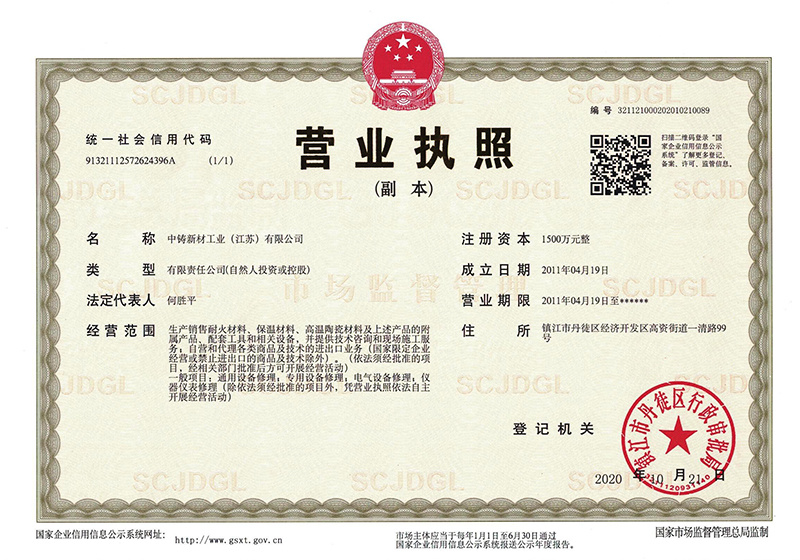News
SINO-FOUNDRY—professional refractory manufacturer
Common Misconceptions About Coil Cement in Metallurgy: Unveiling the Truth
2025-08-22
Introduction to Coil Cement in Metallurgy Coil cement plays a pivotal role in the metallurgy industry, particularly in the processing of non-ferrous metals such as copper. Unfortunately, various misconceptions surround this essential material, leading to misunderstandings that can affect application and performance. In this article, we aim to clarify these misconceptions and provide a comprehensiv
Introduction to Coil Cement in Metallurgy
Coil cement plays a pivotal role in the metallurgy industry, particularly in the processing of non-ferrous metals such as copper. Unfortunately, various misconceptions surround this essential material, leading to misunderstandings that can affect application and performance. In this article, we aim to clarify these misconceptions and provide a comprehensive understanding of coil cement, its uses, and its significance in metallurgy.
What is Coil Cement?
Coil cement is a specialized adhesive compound designed for use in the assembly and bonding of metal components, particularly in the coil winding of electrical devices. Its formulation consists of various resins and additives that enhance adhesion, heat resistance, and chemical stability. In metallurgy, coil cement is primarily used to secure copper and other non-ferrous metal coils in a variety of applications, including electrical transformers, motors, and generators.
The Importance of Coil Cement in Metallurgy
In metallurgy, particularly concerning non-ferrous metals like copper, the quality and durability of coil cement significantly influence the overall performance of finished products. High-quality coil cement ensures that metal components remain securely bonded, even under extreme conditions. This contributes not only to the longevity of the products but also to their efficiency.
Common Misconceptions About Coil Cement
While coil cement is a crucial material in metallurgy, several misconceptions can lead to improper usage and expectations. Here are some of the most common myths associated with coil cement:
1. Coil Cement is the Same as Regular Adhesive
One prevalent misconception is that coil cement can be substituted with standard adhesives. In reality, coil cement is specifically engineered to withstand high temperatures and resist electrical currents, making it vastly different from ordinary adhesives. Using regular glue in applications requiring coil cement can lead to failures, decreased efficiency, and safety hazards.
2. All Coil Cements are Created Equal
Another myth is that all coil cements are interchangeable. Various formulations exist, each tailored to meet specific requirements based on factors such as temperature tolerance, curing time, and chemical exposure. Selecting the appropriate coil cement for the intended application is critical to ensure optimal performance and longevity.
3. Coil Cement Does Not Affect Electrical Performance
Many professionals underestimate the influence of coil cement on electrical performance. The right coil cement can minimize electrical resistance, enhance conductivity, and ensure efficient operation. Poorly chosen or improperly applied coil cement can lead to increased resistance, overheating, and ultimately, system failure.
4. Application of Coil Cement is a Simple Process
While applying coil cement may seem straightforward, it requires precision and attention to detail. Factors such as surface preparation, curing time, and the environment in which it is applied play significant roles in the effectiveness of the bonding. Neglecting these factors can result in subpar adhesion and compromised performance.
5. Coil Cement is Only Relevant for Electrical Applications
Although coil cement is primarily associated with electrical applications, its uses extend far beyond that scope. Industries such as automotive, aerospace, and even construction utilize coil cement for various bonding and sealing applications, demonstrating its versatility and significance across several sectors.
Key Benefits of Using Coil Cement in Metallurgy
Understanding the benefits of coil cement can help dispel the misconceptions surrounding its use. Here are some key advantages:
1. Enhanced Adhesion Properties
Coil cement is designed to provide superior adhesion on metal surfaces. This ensures a strong bond that can withstand the rigors of mechanical stress, temperature fluctuations, and exposure to chemicals.
2. High Temperature Resistance
One of the critical features of coil cement is its ability to resist high temperatures. This property is especially crucial in electrical applications where heat generation can compromise other adhesives.
3. Electrical Insulation
Coil cement provides excellent electrical insulation, preventing unwanted current leakage and ensuring safe operation in electrical systems. This isolation is vital in maintaining the efficiency and reliability of electrical devices.
4. Durability and Longevity
High-quality coil cement is formulated to withstand harsh operating conditions, offering long-lasting performance. This durability translates to reduced maintenance costs and extended service life for machinery and devices.
How to Choose the Right Coil Cement
Selecting the appropriate coil cement is crucial for optimal performance in your applications. Here are some factors to consider:
1. Application Environment
Consider the temperature, humidity, and chemical exposure conditions in which the coil cement will be used. Different formulations are available to meet specific environmental challenges.
2. Bonding Surface Material
The type of metal being bonded affects the choice of coil cement. Some formulations work better with certain metals than others. Be sure to match the coil cement to the metal surfaces for optimal adhesion.
3. Curing Time
Different coil cements have varying curing times. Depending on your project's timeline, you may need to choose a formulation that cures quickly or one that allows for extended working time.
4. Electrical Conductivity Requirements
Assess the electrical conductivity needs of your application. Some coil cements enhance conductivity, while others provide insulation. Choose based on the specific requirements of your project.
Proper Application Techniques for Coil Cement
To ensure the best results when using coil cement, follow these application techniques:
1. Surface Preparation
Clean and prepare the surfaces to be bonded thoroughly. Remove any dirt, oil, or oxidation using appropriate cleaning agents or abrasives. Proper surface preparation is critical for achieving strong adhesion.
2. Mixing the Coil Cement
If the coil cement requires mixing, follow the manufacturer's instructions diligently. Proper mixing ensures that the components are evenly distributed, maximizing the effectiveness of the adhesive.
3. Applying the Coil Cement
Apply the coil cement evenly across the bonding surfaces. Use a brush, roller, or spray, depending on the formulation and application requirements. Avoid over-application, as excess adhesive can lead to undesirable results.
4. Allow for Curing Time
After application, allow the coil cement to cure as per the manufacturer's recommendations. This step is crucial for achieving the desired strength and performance.
Frequently Asked Questions (FAQs)
1. What is the primary use of coil cement in metallurgy?
Coil cement is primarily used to bond metal components, particularly in electrical applications like transformers and motors.
2. Can I use regular adhesive instead of coil cement?
No, regular adhesives lack the specific properties required for high-temperature and electrical applications, making them unsuitable substitutes.
3. How can I ensure proper adhesion when using coil cement?
Proper surface preparation and following the manufacturer's application guidelines are essential to achieve strong adhesion.
4. Is coil cement resistant to chemicals?
Many coil cements are formulated to resist various chemicals, but it's essential to select a formulation designed for your specific application.
5. How do I select the right coil cement for my project?
Consider factors such as application environment, bonding surface material, curing time, and electrical conductivity requirements when choosing coil cement.
Conclusion
Understanding the common misconceptions about coil cement in metallurgy is vital for anyone involved in the industry. By recognizing the unique properties and advantages of coil cement, professionals can make informed decisions that enhance the efficiency, safety, and longevity of their applications. Proper selection and application of coil cement can lead to significant improvements in the performance of electrical devices and other metal components. With the knowledge gained from this article, we hope you feel more equipped to navigate the complexities of coil cement usage in metallurgy.
Related News
2024-11-05
Zhongzhu New Materials Industry sincerely invites you to participate in the 24th International Forum and Exhibition on Recycled Metals.

WeChat public account

View mobile website
Address : No. 99, Yiqing Road, Gaozi Street, EconomicDevelopment Zone, Dantu District, Zhenjiang City
Fax : +86-511-85683066
E-mail : sales@sfr168.com
Website : https://www.sfr168.com
Copyright©2023 Sino-Foundry Refractory(Jiangsu) Co.,Ltd. Powered by:www.300.cn
Copyright©2023 Sino-Foundry Refractory(Jiangsu) Co.,Ltd.
IPV6 | SEO | Cloud Information



